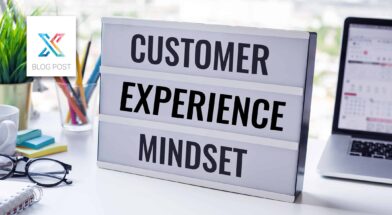The architectural, engineering, and construction (AEC) industry has experienced a profound transformation in recent years, highlighted by a significant shift towards remote work. According to Zweig Group’s AEC Workplace of the Future survey, 72% of respondents indicated that their firms adopted remote and flexible work options post-March 2020. This transition has been propelled by technological advancements and accelerated by global events like the COVID-19 pandemic. As remote work becomes increasingly feasible, it offers both opportunities and challenges for the industry.
Expanding the Talent Pool
One of the primary advantages of remote work is the ability to access a broader talent pool. Firms are no longer constrained by geography and can recruit top talent from anywhere in the world. This flexibility enables companies to build diverse teams with a wide range of skills and perspectives, which enhances creativity and problem-solving capabilities. Additionally, employees benefit from the ability to work from locations that best suit their personal and professional needs, leading to improved work-life balance and increased job satisfaction.
Digital Infrastructure & Communication
The transition to remote or hybrid work models necessitates a robust digital infrastructure and effective communication tools. To maintain collaboration and manage projects across distributed teams, firms must invest in reliable internet connections, secure cloud-based platforms, and advanced software for design and project management. Essential tools now include video conferencing, instant messaging, and collaborative document editing to keep teams connected and projects on track. The firms that are doing this best are the ones that have included electronic listening in their digital toolbox.
The Importance of Electronic Listening
With in-person interactions reduced, electronic listening becomes crucial in a remote work environment. Electronic listening involves effectively interpreting and responding to digital communications, going beyond merely reading emails and messages. It requires understanding the nuances and underlying messages conveyed through these digital mediums, ensuring clear and empathetic communication. A robust customer feedback software platform is an excellent tool for electronic listening and can also be used for gathering employee feedback.
- Active Engagement: Unlike face-to-face conversations, where body language and tone of voice provide additional context, digital communications can be easily misunderstood. Active engagement in electronic listening means paying close attention to the content and context of messages, asking clarifying questions, and providing thoughtful responses. This ensures that the respondent feels heard and understood, which is vital for maintaining strong working relationships.
- Frequent Check-Ins: Regular virtual check-ins can help mitigate feelings of isolation and ensure that team members stay aligned with project goals. These check-ins allow team members to voice concerns, share updates, and receive feedback. By making a concerted effort to listen and respond during these meetings, managers can demonstrate their commitment to their team's well-being and professional growth.
- Utilizing Multiple Channels: Different team members may have different communication preferences. Some might prefer emails, while others might find instant messaging or video calls more effective. By being attuned to these preferences and utilizing multiple communication channels, firms can enhance their electronic listening capabilities and ensure that all team members feel comfortable and included in the communication process.
- Encouraging Open Communication: Creating a culture of open communication is essential for effective electronic listening. This involves encouraging team members to share their thoughts and ideas freely, without fear of judgment. When team members feel safe expressing themselves, it leads to more honest and productive conversations, ultimately fostering a more collaborative and innovative work environment.
- Feedback Mechanisms: Implementing employee feedback mechanisms enhances both electronic listening and in-person engagement. Regular surveys, proactive communication, and open forums provide team members with opportunities to share their experiences and suggestions for improvement. By actively listening to this feedback and making necessary changes, firms can continuously refine their remote work practices and address emerging issues promptly. This approach not only improves overall team collaboration but also ensures a more responsive and adaptable work environment.
Fostering Trust & Collaboration
Building trust between team members can be more challenging in a remote work environment. Without the casual interactions of an office setting, team members might feel isolated or disconnected. To counter this, firms should create opportunities for social interaction and team-building activities, even in a virtual format. Transparent communication and clear expectations are crucial for fostering trust and accountability. Sharing client feedback is one effective strategy to build a strong sense of "team." This not only keeps everyone aligned with the firm's goals but also reinforces a collaborative and supportive culture.
Conclusion
The shift towards remote work in the AEC industry has introduced significant changes and opportunities. While it enables firms to access a broader talent pool and offer greater flexibility, it also necessitates investment in digital infrastructure and a focus on maintaining effective communication and collaboration. By adding feedback software to their technology framework, AEC and other professional service industry firms can establish strong electronic listening in their remote work environment and continue to deliver exceptional projects, services, and customer experiences.





